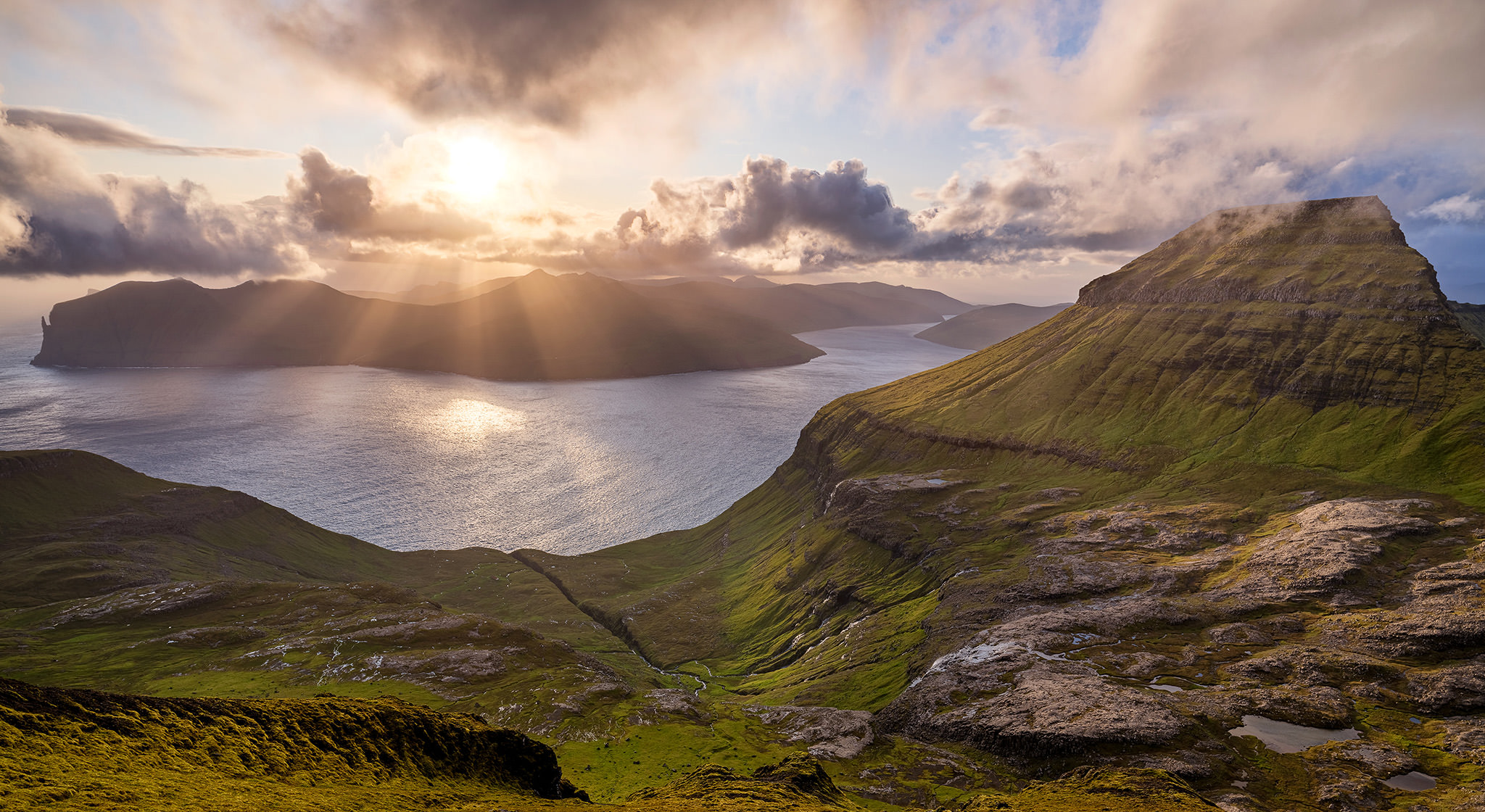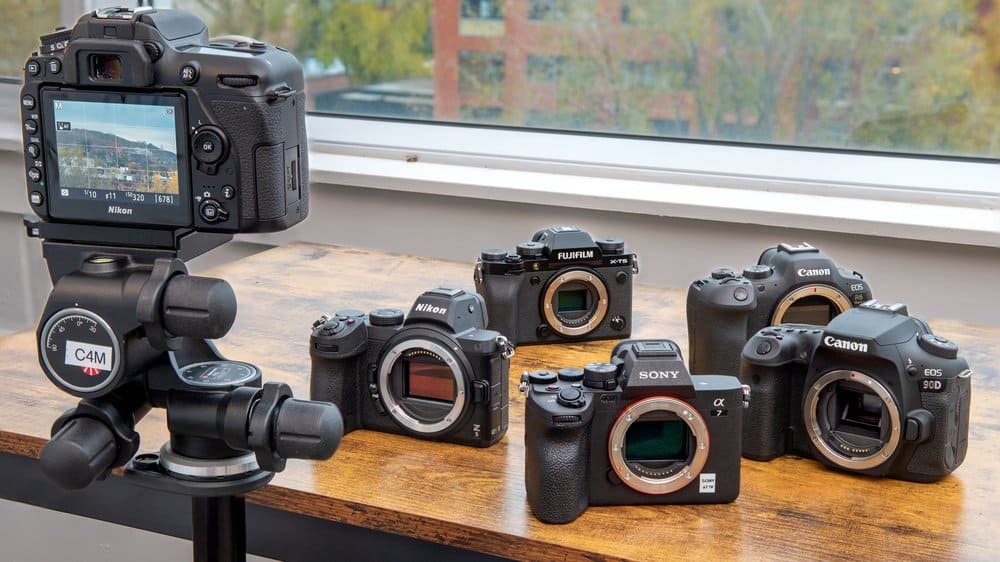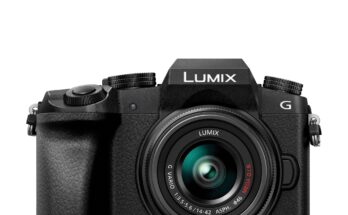The Sony A7R IV and the Fujifilm GFX 100S are top choices for landscape photography. These mirrorless cameras provide exceptional image quality and dynamic range.
Choosing the best mirrorless camera for landscape photography involves balancing resolution, dynamic range, and portability. High-resolution sensors capture the fine detail essential for vast landscapes, while a broad dynamic range ensures all nuances of light and shadow are recorded. Landscape photographers often travel to remote locations, so a camera that combines these features with sturdy construction and good battery life is ideal.
Leading brands like Sony and Fujifilm offer models that excel in these areas, with Sony’s A7 series being notable for its full-frame sensors, and Fujifilm’s GFX series standing out with its larger medium-format sensor for unparalleled detail. As technology advances, mirrorless cameras continue to offer lighter weight options compared to traditional DSLRs, without compromising on image quality, making them a preferred choice for photographers who traverse rugged terrains to capture the beauty of the natural world.
Breaking Ground With Mirrorless Cameras
Mirrorless cameras have become game-changers in the realms of photography. With their lightweight design and cutting-edge technology, they stand as pioneers for photographers. Particularly in landscape photography, these cameras offer a blend of versatility and performance that is hard to beat.
The Rise Of The Mirrorless Revolution
Once upon a time, digital SLRs reigned supreme. Then came mirrorless cameras, turning the tide. Each year, they leap forward, capturing photographers’ hearts. Their evolution speaks volumes about their growing dominance in the photography world.
Their key advantages include:
- Lightweight bodies: Less strain on your shoulders.
- Advanced technology: Features for unmatched quality.
- Enhanced electronic viewfinders: For precise composition.
- Faster shooting speeds: Never miss a fleeting moment.
Photographers everywhere notice the shift to mirrorless. They also see the potential these cameras have.
Why Mirrorless Is The New Favorite For Landscapes
Capturing the grandeur of landscapes demands a special kind of camera. Mirrorless cameras meet these demands with ease. Their unique features make them particularly suited for landscape photography.
| Feature | Advantage |
|---|---|
| High-resolution sensors | Deliver breathtaking detail. |
| Dynamic range | Excel in various lighting conditions. |
| Image stabilization | Sharp images, even without a tripod. |
| Lightweight designs | Effortless to carry on long hikes. |
Landscapes don’t wait. So a camera that starts quickly is key. Mirrorless cameras shine in this aspect. They also offer large, high-definition LCD screens. See your scene in vivid detail before you shoot.
With these powerhouse features, it’s clear why mirrorless is leading the way for landscape photographers.

Credit: www.techradar.com
Key Features For Landscape Photography
Photographers know the magic of a good camera for landscape shots. Key features turn good photos into great ones. This section dives into what makes a camera perfect for nature’s vast beauty.
Sensor Size Matters: Full Frame Vs Crop Sensors
The sensor is the eye of the camera. Full-frame sensors capture more scene. They are best for wide landscapes. Crop sensors are smaller. But they can still take quality photos. They are often lighter and less costly too.
Dynamic Range And Image Quality
High dynamic range is vital. It catches all shades from bright to dark. Details pop in every light condition. This means better quality in your landscape photos.
- Look for a high dynamic range rating.
- More megapixels can mean clearer pictures.
- Check for color accuracy and low-light performance.
Weather Sealing For The Great Outdoors
Landscape photography faces all weather. Weather-sealed cameras are a must. They protect against rain, dust, and cold. Your gear stays safe, and you keep shooting in the wild.
| Feature | Benefit |
|---|---|
| Weather Sealing | Take photos in any condition without worry. |
| Durable Build | It lasts longer against the elements. |
| Sturdy Grips | Easy to hold, even with gloves on. |
Top Mirrorless Cameras For Landscapes
The quest for the perfect landscape photograph demands a camera that’s versatile, high-quality, and adaptable. Mirrorless cameras have emerged as favorites for photographers who value both image quality and portability. They offer a range of features beneficial for capturing vast landscapes. Let’s delve into some of the best cameras suited to landscape photography enthusiasts.
The Veterans: Tried And True Models
Canon EOS R5 and Sony A7R IV stand tall as the veterans of landscape photography. Both are equipped with impressive full-frame sensors and high-resolution outputs. Busy photographers appreciate their fast autofocus and durable builds. Here’s a quick comparison:
| Feature | Canon EOS R5 | Sony A7R IV |
|---|---|---|
| Sensor | 45 Megapixels | 61 Megapixels |
| Autofocus | Dual Pixel CMOS AF II | Fast Hybrid AF |
| Build | Weather-Sealed | Weather-Sealed |
New Players: Latest Innovations On The Market
Nikon Z7 II and Fujifilm GFX 100S represent the newest innovations in mirrorless technology for landscapes. These cameras boast large sensors and high megapixel counts, perfect for capturing every detail of nature. Here’s what you need to know:
- Nikon Z7 II: 45.7 megapixels, Dual EXPEED 6 processors, 4K video capabilities.
- Fujifilm GFX 100S: 102 megapixels, medium format sensor, compact body design.
These models offer increased dynamic range and improved low-light performance, vital for the varied lighting conditions in landscape photography. With these cameras, creators capture the beauty of the natural world with stunning clarity and detail.

Credit: www.mountaintripper.com
Lens Compatibility And Choices
Choosing the right lenses is key to capturing breathtaking landscape photographs. Mirrorless cameras offer a vast array of lens options. This flexibility ensures photographers can find the perfect match for their artistic vision. Explore the best lenses and learn how to breathe new life into vintage glass with modern mirrorless bodies.
Best Lenses For Capturing Vast Landscapes
When it comes to landscape photography, wider lenses are typically the go-to choice. Their broad field of view captures expansive scenes. Here’s a snapshot of what to look for:
- Wide Field of View: Lenses with a focal length between 14mm and 24mm are ideal.
- Fast Aperture: Choose lenses with at least an f/2.8 aperture to ensure sharpness across the frame.
- Weather Sealing: Protect your gear from the elements for outdoor shooting.
| Focal Length (mm) | Maximum Aperture | Weather Sealed |
|---|---|---|
| 14-24 | f/2.8 | Yes |
Adapting Old Lenses To New Mirrorless Bodies
Unleashing the potential of vintage lenses on modern mirrorless cameras can be thrilling. Adapters play a crucial role in this. Keen photographers should note the following:
- Mount Compatibility: Ensure the adapter fits both the lens mount and the camera body.
- Electronic Connection: Some adapters offer electronic communication for autofocus and aperture control.
- Manual Focus: Be prepared for manual focus with most adapted lenses.
Embracing the merger of old and new can lead to unique and distinctive landscape imagery.
Real-world Performance
Real-World Performance matters most when choosing a mirrorless camera for landscape photography. We delve into how these cameras fare outside the studio, under the vast sky and over rugged terrain. Let’s explore their ergonomics and handling, as well as battery life.
Ergonomics And Handling In The Field
Landscape photographers trek to remote locations to capture stunning scenes. Ergonomics become essential. The best mirrorless cameras feel comfortable in your hands even after hours of shooting. A solid grip, intuitive button layout, and a responsive touchscreen are key. Weather-sealed bodies resist dust and moisture, crucial for changing conditions.
Lightweight designs mean less fatigue and more focus on getting that perfect shot. Cameras with articulated screens provide flexibility, allowing you to frame shots at tricky angles.
Battery Life: Preparing For Extended Shoots
The last thing any photographer wants is their camera dying mid-shoot. That’s why long battery life is critical for landscape photography. Many mirrorless cameras now offer batteries that last for hundreds of shots, ensuring you capture every twilight and sunrise.
- Carry extra batteries – Always have backups fully charged.
- Invest in a battery grip – It provides extra power and a better hold.
- Use power saving features – Like dimming the screen or using a viewfinder.
The best mirrorless cameras balance longevity and performance, letting you stay immersed in the beauty around you.
Unlocking Your Camera’s Potential
Unlocking Your Camera’s Potential means understanding every feature. For landscape photographers, mastering your mirrorless camera ensures breathtaking results. Let’s explore optimizing your camera for the perfect shot.
Firmware Updates And Custom Settings
Regular firmware updates unlock new features and fix bugs. Here’s how:
- Check the camera manufacturer’s website for updates.
- Download the latest firmware version.
- Follow the instructions to update your camera safely.
Customize settings enhance your shooting experience.
- Assign functions to custom buttons for quick access.
- Set AEB (Auto Exposure Bracketing) for HDR shots.
- Adjust ISO sensitivity for sharp, low-noise images.
Post-processing Tips For Maximum Impact
Post-processing elevates your images. Start with these tips:
- RAW format: Capture in RAW for more editing control.
- Color adjustments: Enhance the tones to reflect the scene’s mood.
- Sharpening tools: Bring out details without overdoing it.
Use software like Lightroom or Photoshop to bring your vision to life.

Credit: photographylife.com
Frequently Asked Questions Of Best Mirrorless Cameras For Landscape Photography?
What Is The Best Mirrorless Camera For Landscapes?
The Sony A7R IV stands out as the best mirrorless camera for landscapes, featuring a high-resolution 61MP sensor and superb dynamic range.
Which Camera Is Best For Landscape Photography?
The Nikon D850 is widely praised for its high resolution and dynamic range, making it excellent for landscape photography.
Is Mirrorless Better Than Dslr For Landscape Photography?
Mirrorless cameras offer advantages for landscape photography due to their lighter weight, live exposure preview, and often broader lens selection. While both can produce excellent results, mirrorless cameras may provide more convenience and innovation benefits.
Is Canon Or Nikon Better For Landscape Photography?
Both Canon and Nikon offer excellent cameras for landscape photography. Choice depends on personal preference, lens ecosystem, and specific camera features.
Conclusion
Navigating the realm of mirrorless cameras for landscape photography concludes here. Embrace clarity and durability for those breathtaking vistas. Whichever option you choose, remember to consider sensor size, lens compatibility, and weather sealing. Capture the world’s beauty through your lens, one shot at a time.
Happy shooting!



